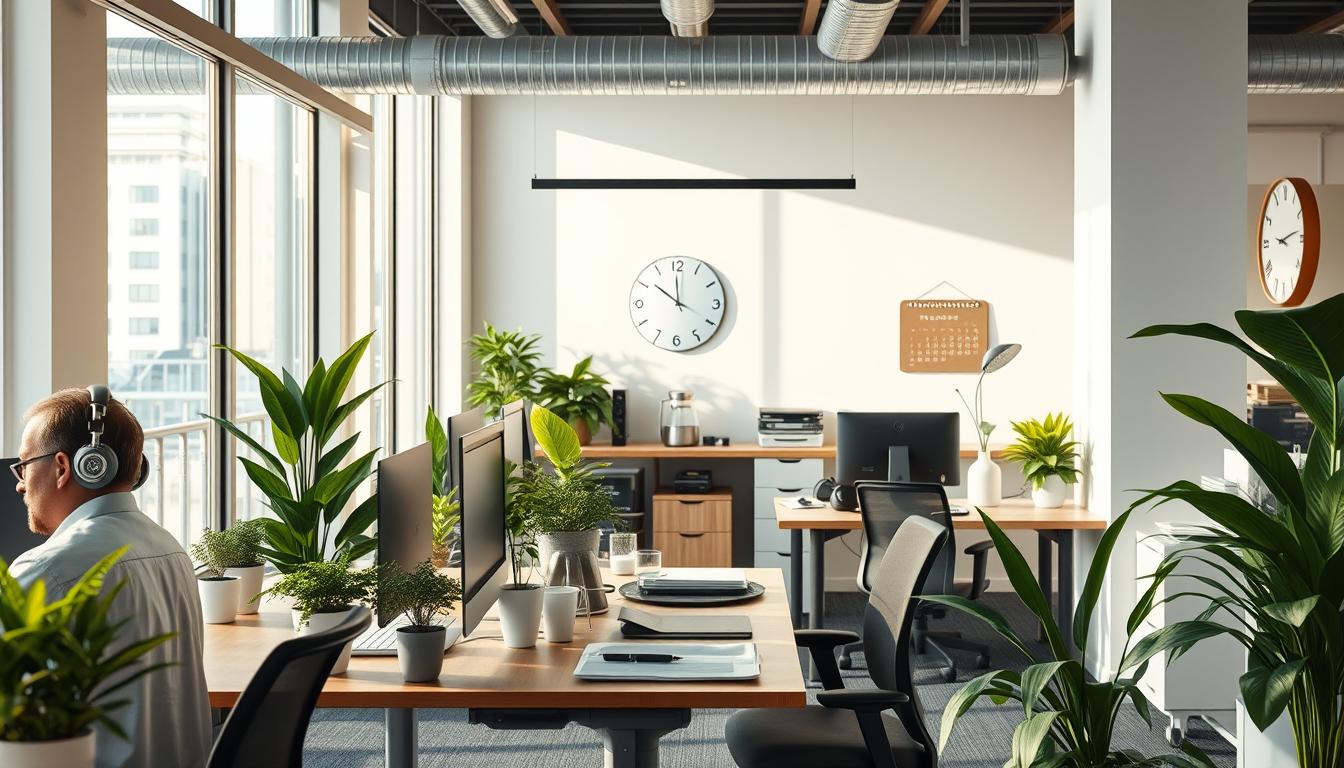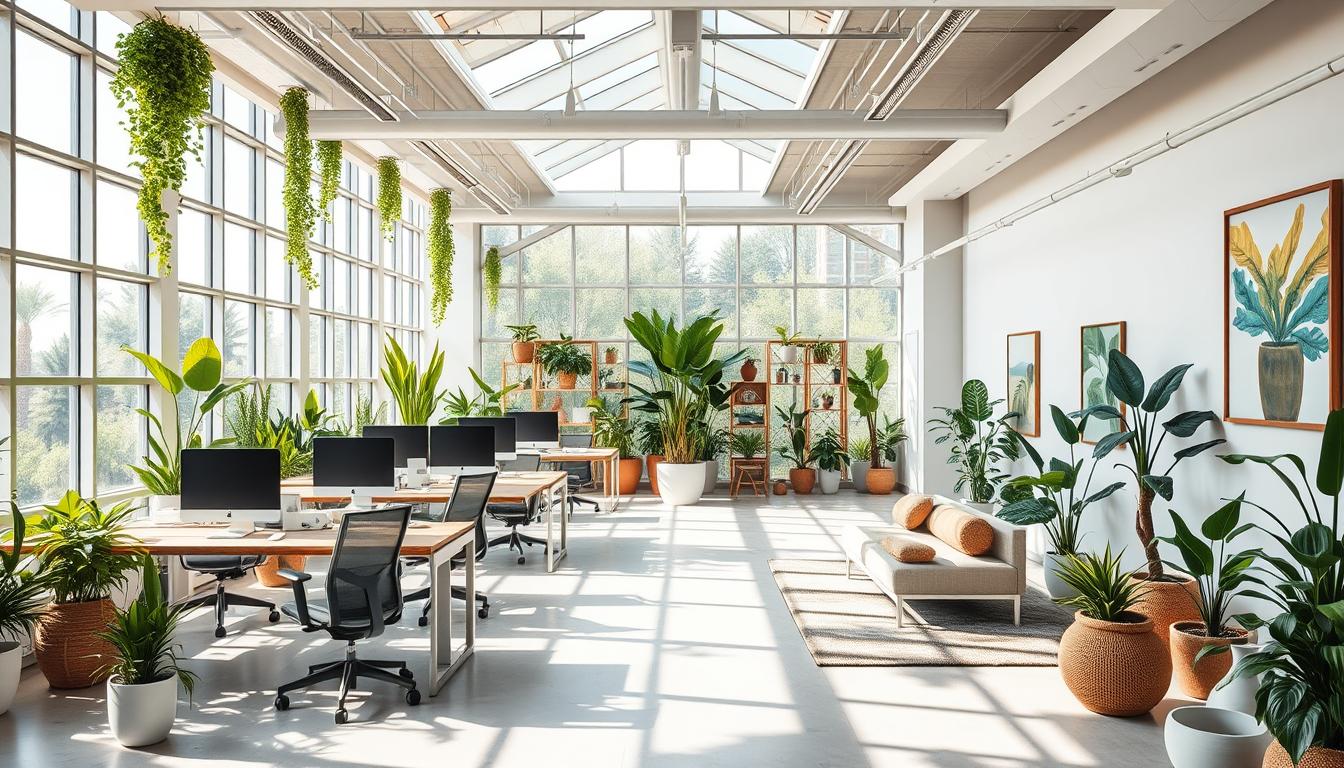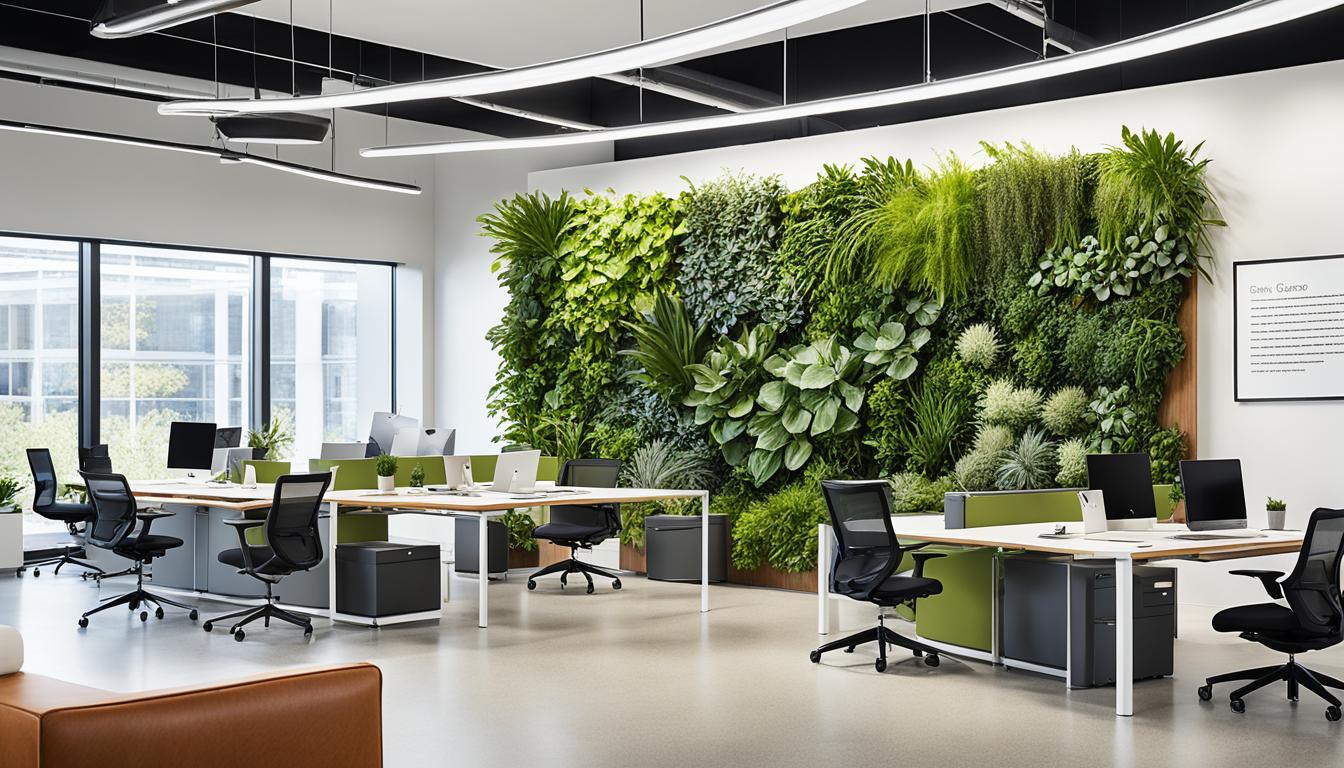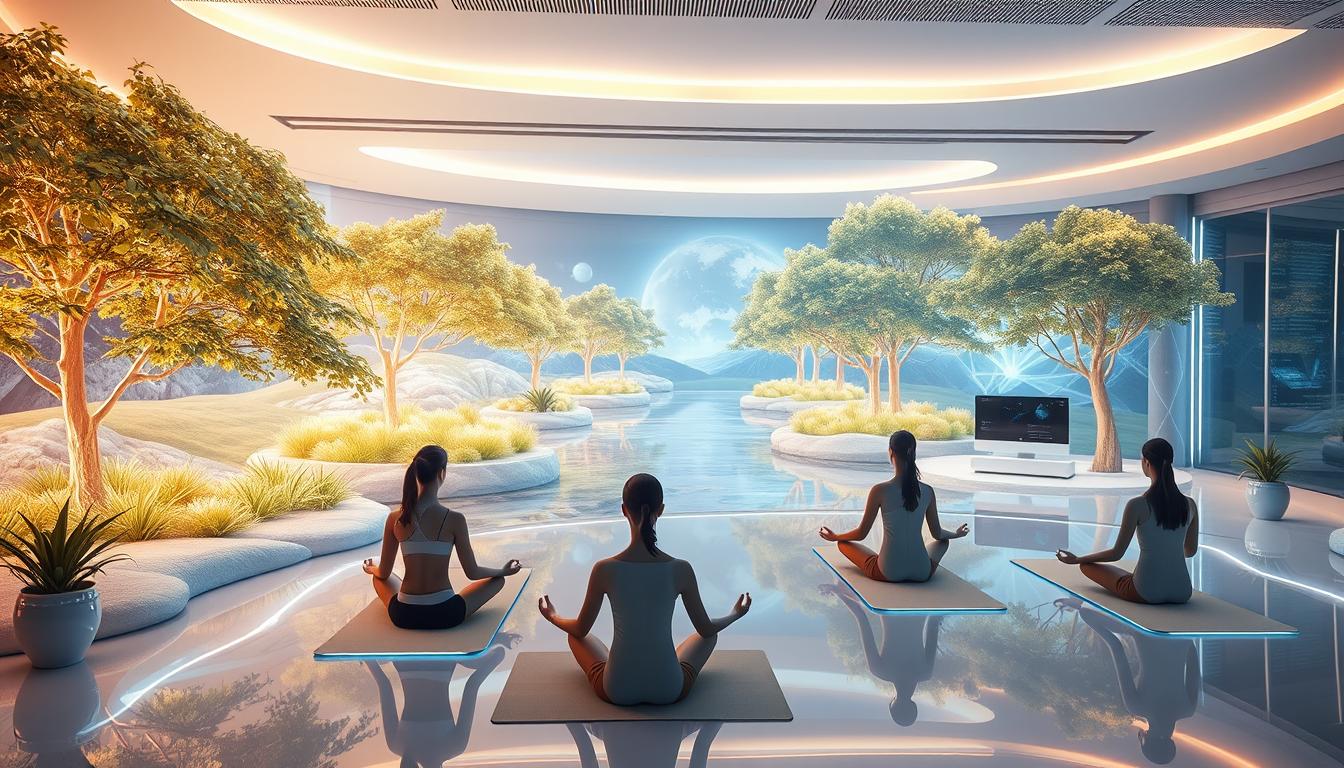Last Updated on December 9, 2025
In today’s corporate world, many companies are moving towards open office settings to encourage teamwork. However, this setup brings its own set of challenges, especially in managing distractions. With a large number of workers struggling to focus due to nearby chatter and office noise, it’s crucial to find ways to overcome these hurdles.
Open office environments often feel chaotic, affecting employee productivity. Studies show that nearly 70 percent of Americans in offices work in open settings. A whopping 76 percent feel unhappy, mainly because of the lack of privacy and trouble concentrating. Office productivity techniques can help you manage distractions and increase your efficiency. By adopting practical strategies, you can improve your focus and enhance the work environment for everyone.
Key Takeaways
- Understanding the challenges of open offices is the first step in managing distractions.
- Practicing effective office productivity techniques can significantly improve focus.
- Collaborative environments should also accommodate spaces for concentrated work.
- Flexibility in work arrangements is increasingly becoming a priority for employees.
- Awareness of personal productivity habits can help navigate an open office effectively.
The Challenges of Open Office Environments
Open office layouts have become common in workplaces, aiming to boost collaboration and teamwork. However, they introduce significant challenges. Persistent noise, lack of privacy, and frequent interruptions are major distractions. The International Facility Management Association reports that 70 percent of offices now have open layouts, without partitions or cubicles.
Working in open offices can hinder your ability to focus. Studies reveal that workers in open spaces are less satisfied with their environment and productivity. A study found that speech is the main distraction, causing workers to lose minutes daily. On average, workers waste 21.5 minutes daily due to conversations.
The constant visibility of others can increase stress levels, making everyone feel like they’re under scrutiny. This can prevent employees from taking breaks or seeking solitude. Thus, it’s crucial to create private areas or quiet zones within these spaces to support focused work.
Understanding the Role of Noise in Distraction
Noise distraction is a significant problem in open office settings. Prolonged exposure to loud sounds can damage hearing and harm the work environment. The constant chatter and ambient noises can greatly impact productivity, with studies showing employees lose about 21.5 minutes daily due to distractions. This translates to around 4% of a typical workday, resulting in significant productivity losses.
Employees face interruptions roughly every 11 minutes, making it hard to stay focused. It can take up to 23 minutes to regain concentration after such distractions. Therefore, workplaces need effective noise management strategies. Creating designated quiet zones or small-group workrooms can improve the environment.
Using sound masking systems, like the QtPro system by Cambridge Sound Management, is a good solution. These systems introduce low-level ambient sound to reduce speech noise distractions. Additionally, installing sound-absorbing panels or using Framery’s soundproof pods can enhance focus by creating a more controlled auditory environment. Making these adjustments can improve concentration and job performance.
Effective Work Habits for Enhanced Focus
In the fast-paced world of open offices, developing effective work habits is crucial for better focus. Starting each day with clear goals sets the stage for success. A prioritized task list helps you manage your workload efficiently. It ensures you have dedicated time for both team work and solo tasks.
Regular meetings with colleagues help manage expectations and cut down on distractions. Good relationships with your team improve communication and create a supportive environment. This environment is key to boosting office productivity.
Try incorporating “focus blocks” into your daily routine. Use this time to minimize distractions by closing your door or wearing headphones. This method significantly improves your ability to focus on important tasks, leading to better work quality.
A clean and organized workspace also enhances productivity. With people spending about 90,000 hours at their desks over their lifetime, a tidy environment is vital. It helps maintain mental clarity, essential for effective work habits.
- Practice self-care by taking short breaks, which can reduce stress and improve well-being.
- Use tools like Monday.com or Trello to organize your projects, aiding in better time management.
- Engage with coworkers by showing interest in their projects, fostering collaboration and knowledge sharing.
Open Office Productivity: Strategies to Improve Concentration
In an open office, constant distractions make improving concentration a significant challenge. Implementing specific strategies can create a more conducive workspace for focused work. Establishing quiet hours among colleagues and using noise-canceling headphones are two effective approaches.
Establish Quiet Hours Among Colleagues
Designating *quiet hours* is a practical solution to enhance productivity. By coordinating with teammates to agree on specific times to lower noise levels, you foster an atmosphere that supports intensive work. This team effort allows colleagues to limit casual conversations and create a shared understanding of the need for focused time.
Utilize Noise-Canceling Headphones
Investing in quality *noise-canceling headphones for productivity* can significantly improve concentration in an open office. These headphones effectively block ambient sounds, providing a personal sanctuary amid the lively environment. By wearing these headphones, you not only minimize distractions but also send a clear signal to others that you are focused and prefer not to be disturbed.
Designing your Workspace for Reduced Distractions
Creating a workspace that boosts productivity requires careful planning and design. By using physical barriers, you can improve focus and cut down on interruptions in open offices. Privacy screens, modular furniture, and flexible workspaces help create an environment that supports diverse employee needs.
Implementing Physical Barriers
Physical barriers are key in reducing distractions. Privacy screens or dividers can carve out personal spaces in the midst of an open office’s chaos. These barriers, often made from sound-absorbing materials, promote a quieter space for concentration. Colored signs indicating workspace availability also help direct attention and reduce visual distractions.
Creating Designated Quiet Zones
Quiet zones in the office are crucial for minimizing distractions. These areas should be quiet and free from conversation, offering a sanctuary for focused work. By placing these zones away from busy areas, you improve the workspace’s functionality. For more on creating effective work environments, explore this link. Involving employees in the design process ensures these quiet spaces meet their needs, boosting satisfaction and productivity.
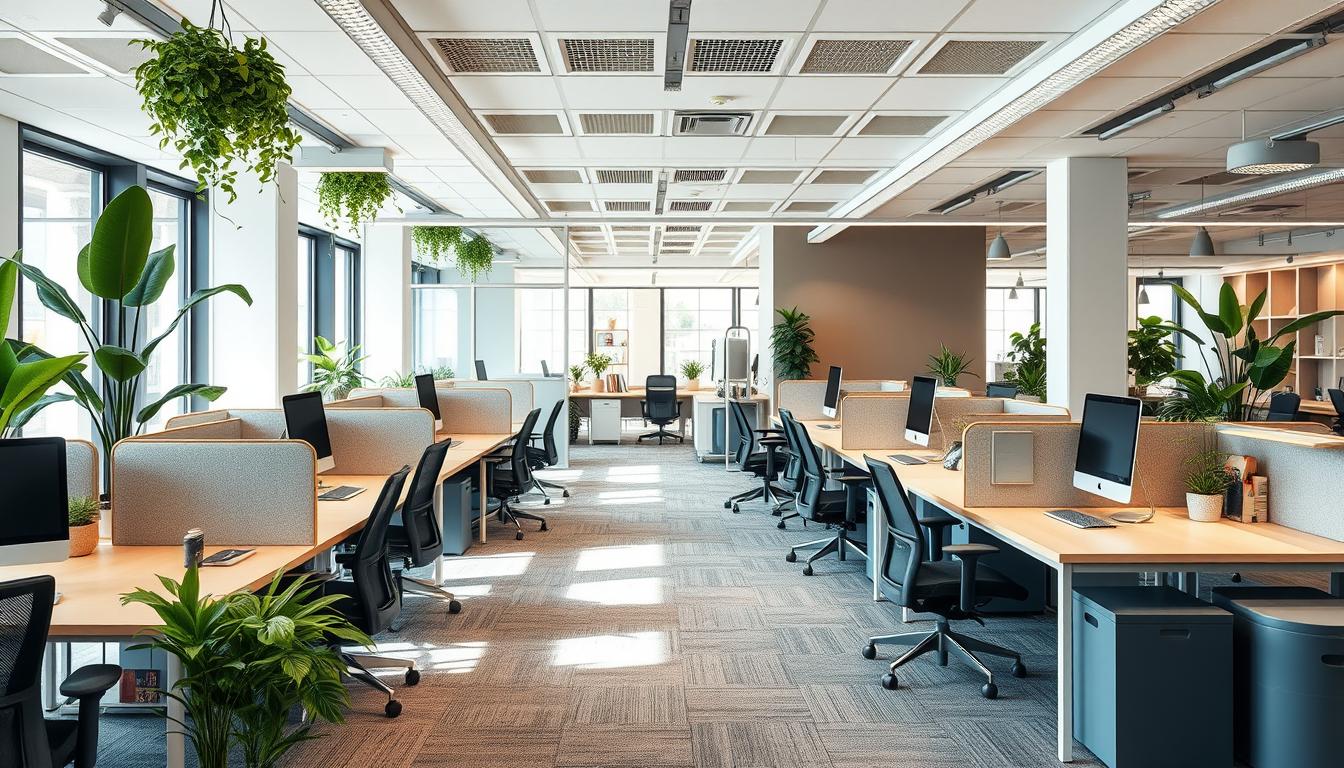
Time Management Techniques to Increase Productivity at Work
Time management is crucial for boosting workplace productivity. By adopting effective techniques, you can enhance efficiency in open office environments. For instance, the Pomodoro Technique involves working for 25 minutes followed by a 5-minute break. This method significantly improves focus and reduces burnout.
Strategies like time blocking help you schedule tasks, meetings, and breaks. This approach minimizes context switching, which can lead to interruptions and decreased productivity. Research shows that switching tasks can disrupt focus for up to 23 minutes. Thus, planning your day in blocks helps maintain concentration and keeps you on track.
The Eisenhower Matrix is another valuable tool for time management. It categorizes tasks by urgency and importance, helping you focus on critical tasks. Limiting your to-do list to five to nine items also enhances focus and reduces overwhelm.
Regular breaks during the workday also increase productivity. Studies indicate that short breaks refresh the mind, allowing for more energy in tackling tasks. These time management strategies offer a structured way to manage distractions in open office settings.
Leveraging Office Organization Tips
Creating an effective workspace is key to boosting your productivity at work. By applying simple office organization tips, you can turn your space into a better place for focus and efficiency. Begin by decluttering your desk; a clean surface reduces distractions and aids in clearer thinking.
Use storage solutions like file organizers and drawer dividers to keep important items close. This cuts down on the time spent looking for materials, allowing you to focus on your tasks. For digital organization, categorize your files and emails. This method not only saves time but also makes it easier to find information when needed.
Another important part of organizing your workspace is creating a mental environment that supports productivity. A tidy and organized space can positively affect your mindset, boosting your motivation to work efficiently. Consider setting up specific areas for collaboration and others for focused work to meet your daily task needs.
Office Productivity Tools to Combat Distractions
In today’s digital work environment, using effective office productivity tools is key to fighting distractions in open office settings. These tools help streamline tasks and improve focus. This makes achieving enhanced productivity more attainable.
Project management software, like Zenkit, offers features that support team collaboration and individual preferences. Users can switch between views like Kanban boards or calendars. This flexibility helps keep objectives clear and reduces the risk of losing focus.
To boost concentration, consider time orchestration platforms like Clockwise. These tools create uninterrupted Focus Time in your calendar. This makes managing your workload more effective. When everyone respects these time blocks, team productivity increases.
- Headphones are essential for controlling your sound environment. They help reduce external noise, making it easier to stay focused.
- Tools like Pushbullet minimize distractions by consolidating notifications from various devices. This ensures you stay focused on your work.
- The Freedom app blocks distracting websites and apps across devices. This promotes a more focused work session.
- Many find that incorporating breaks enhances their efficiency. Apps like Time Out remind you to take a few moments for yourself.
Managing notifications is critical in open office environments. Platforms like Slack and integrated tools for Slack help customize notification settings. This prevents overwhelming distractions. By using these tools wisely, you can create a more focused workspace. This significantly enhances productivity.
Developing Personal Strategies to Boost Productivity Levels
Creating personal productivity strategies tailored to your unique working style can significantly boost productivity levels in an open office environment. Focus on establishing defined personal goals that not only align with your tasks but also motivate you. A positive mindset plays a crucial role in this process, allowing for effective focus methods that enhance your engagement.
It’s essential to identify the specific times of day when your concentration peaks. By reserving your most challenging tasks for these periods, you can optimize your performance and efficiency. Remember, the brain isn’t hardwired for multitasking, and frequent task switching can waste valuable time and lower your overall productivity.
Regular self-assessment of your habits provides the flexibility needed to adjust your strategies. This practice allows you to maintain high productivity levels while ensuring that you’re working smart, not just hard. Integrating productivity tools into your daily routine can streamline your task management and help you allocate time effectively. Effectively managing your work environment, setting boundaries, and taking purposeful breaks will only enhance your ability to focus on what matters most.
Conclusion
Managing distractions in an open office environment demands a balanced strategy. This approach must consider the layout of your workspace to minimize distractions and enhance focus. Incorporate design elements that promote a better work environment. Also, develop personal habits that encourage collaboration and respect for individual tasks.
Introducing physical barriers or designated quiet zones can be crucial in improving your work environment. Additionally, using noise-canceling headphones and setting quiet hours with colleagues can greatly reduce interruptions. This leads to a healthier work atmosphere.
Adopting these strategies will not only improve your productivity but also enhance team dynamics and overall workplace satisfaction. By tackling the challenges of open office settings, you and your team are set for greater success.


